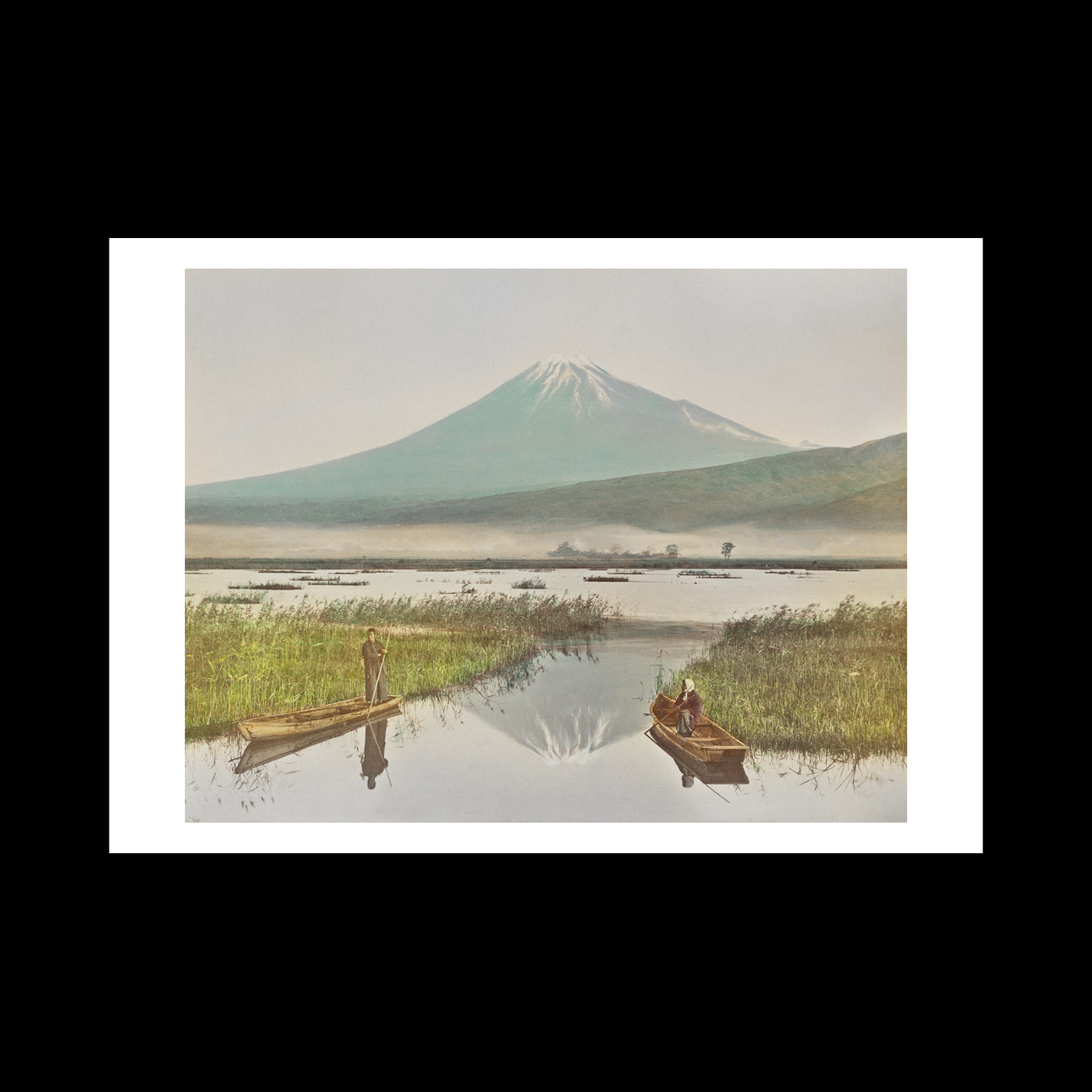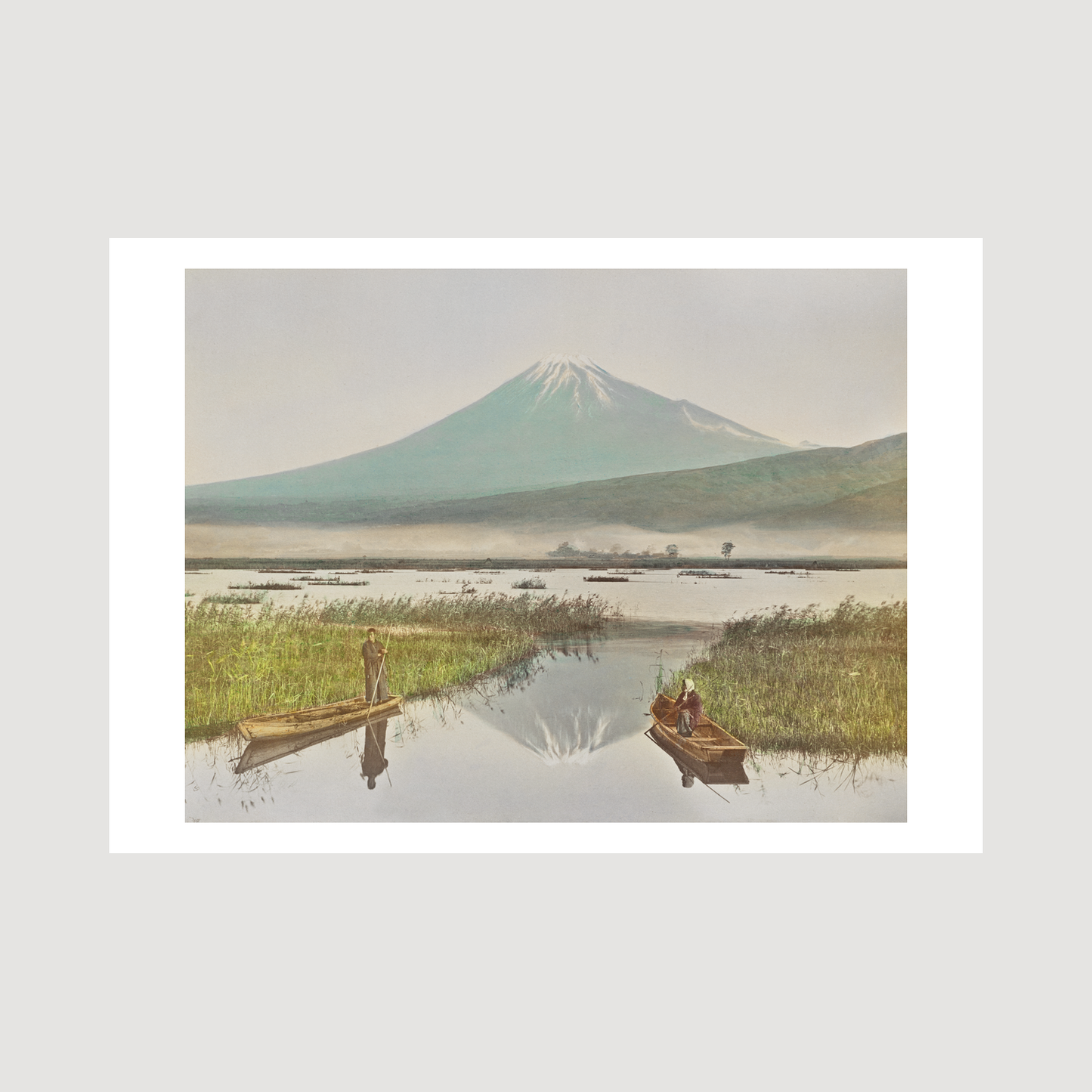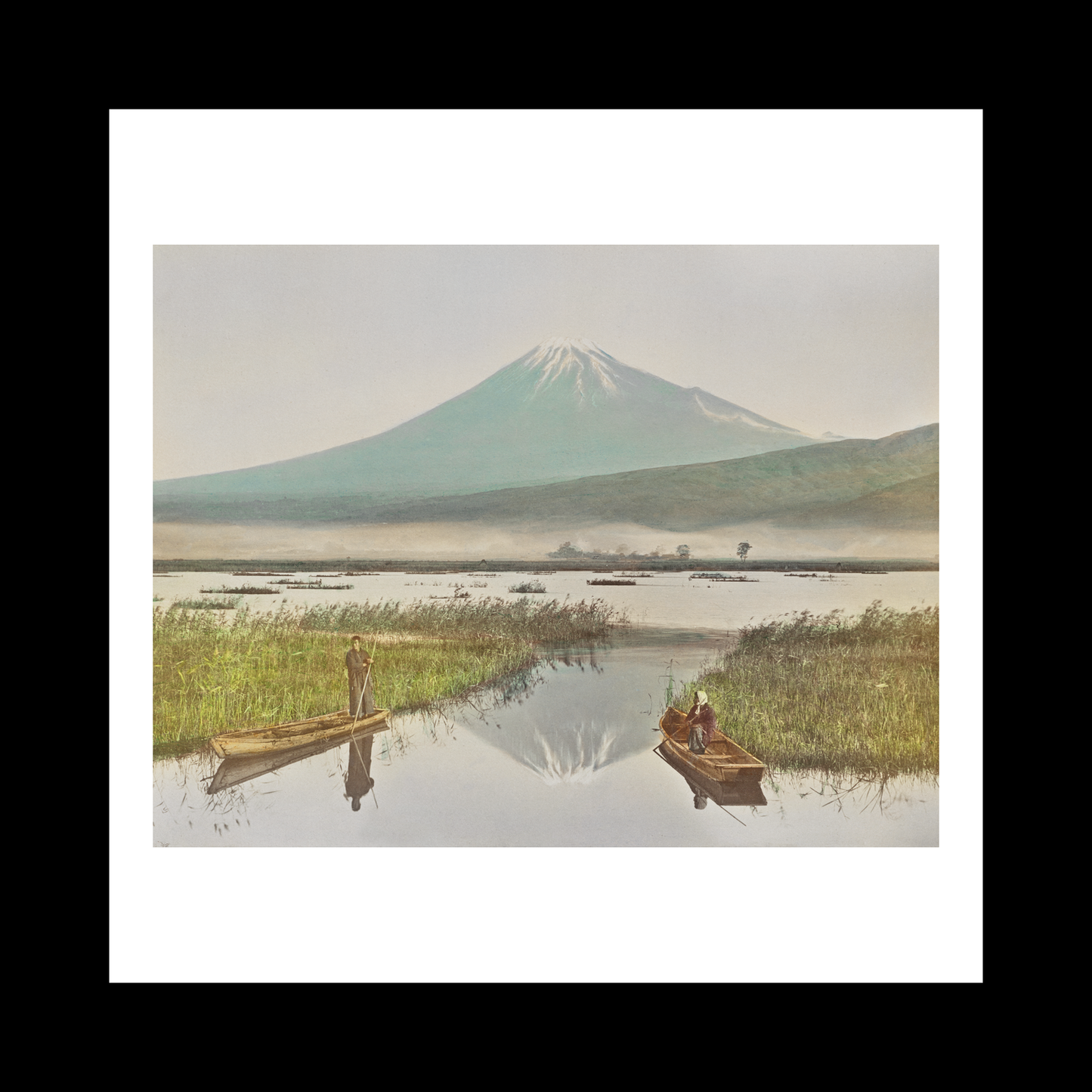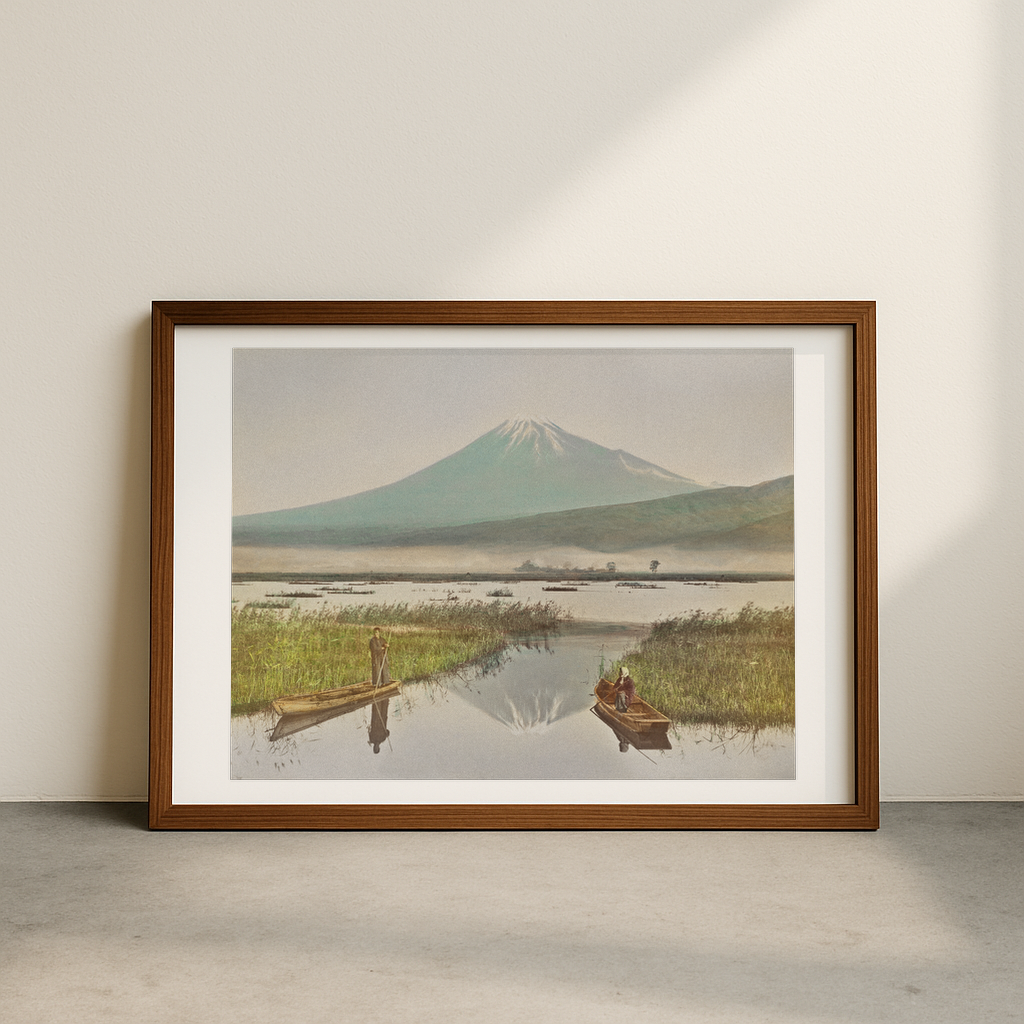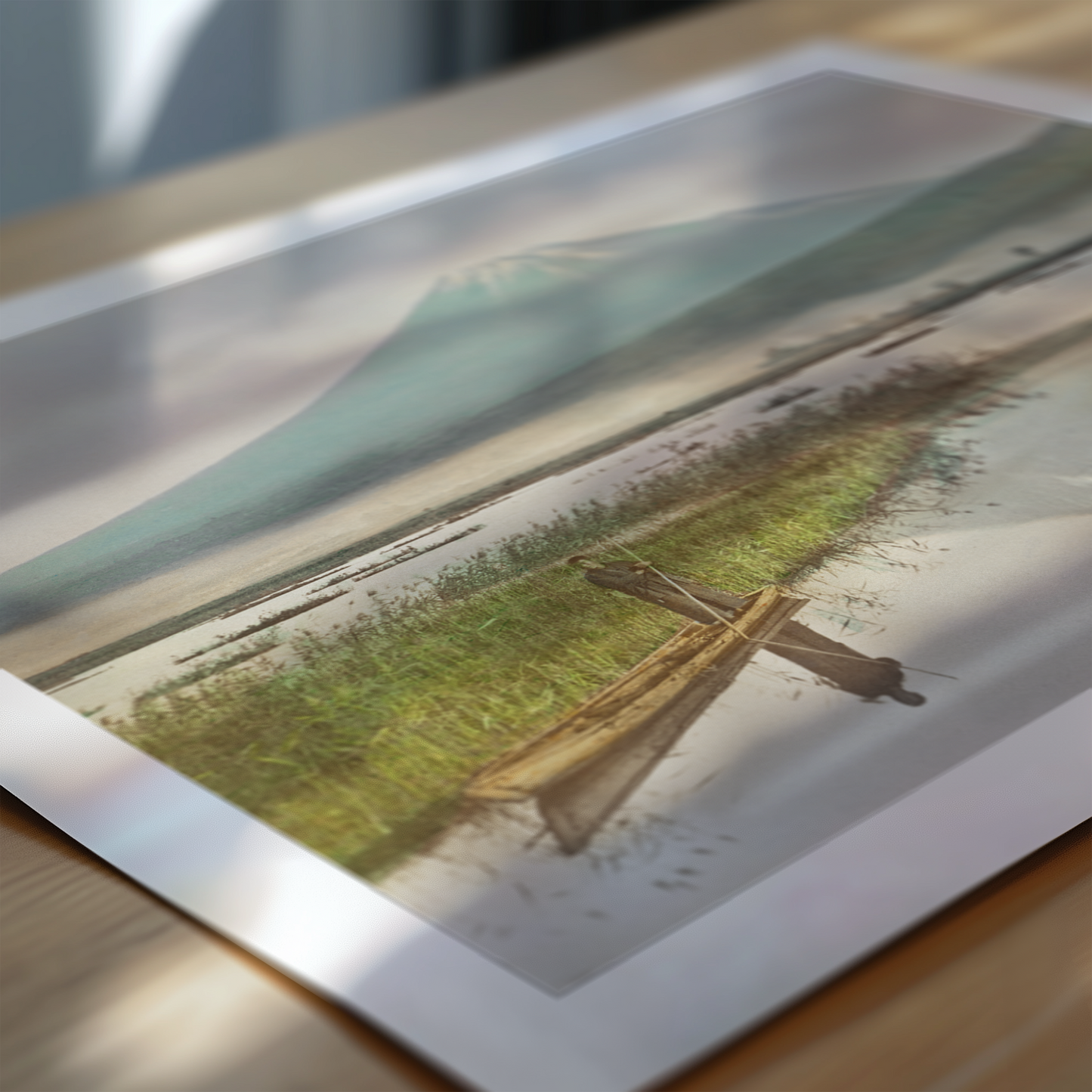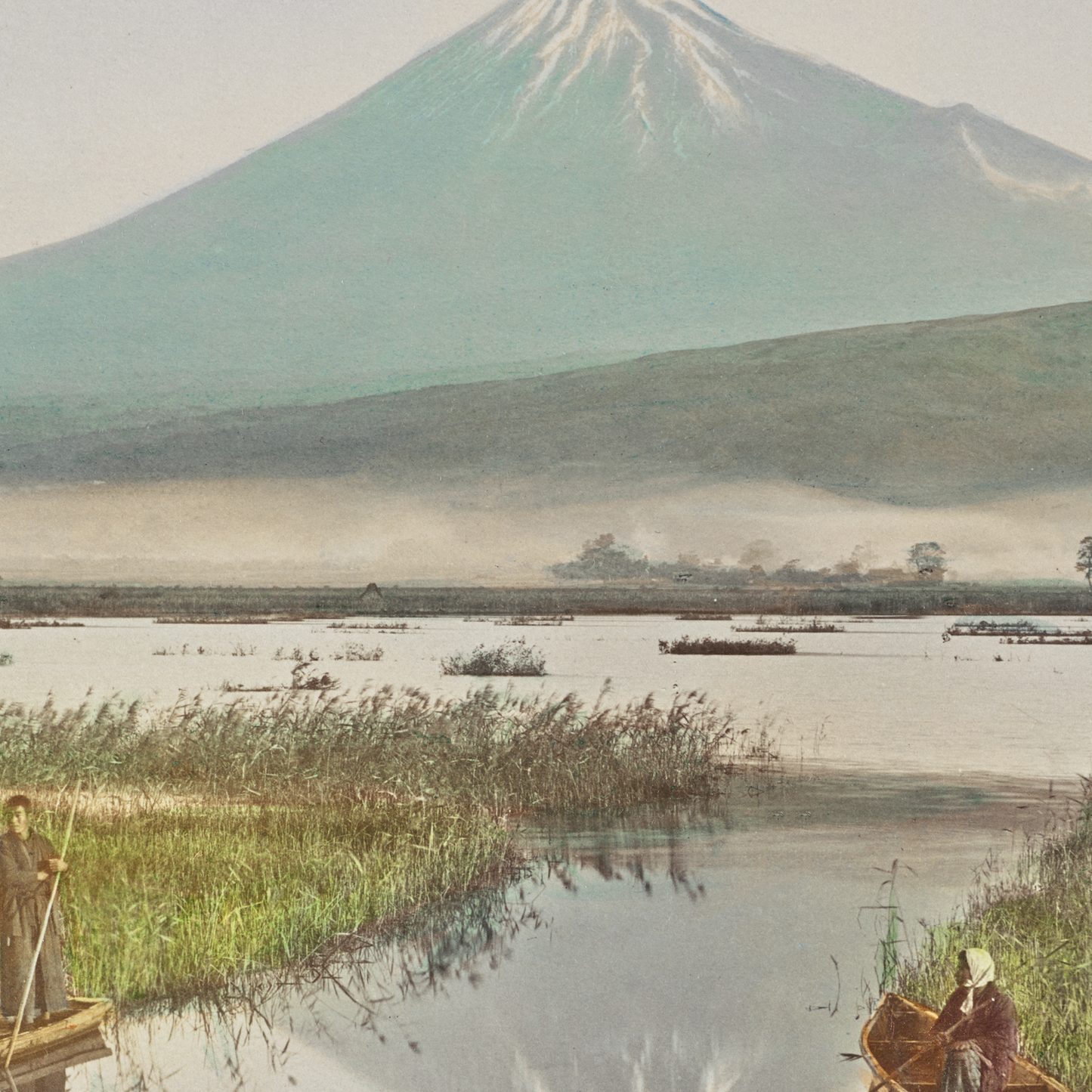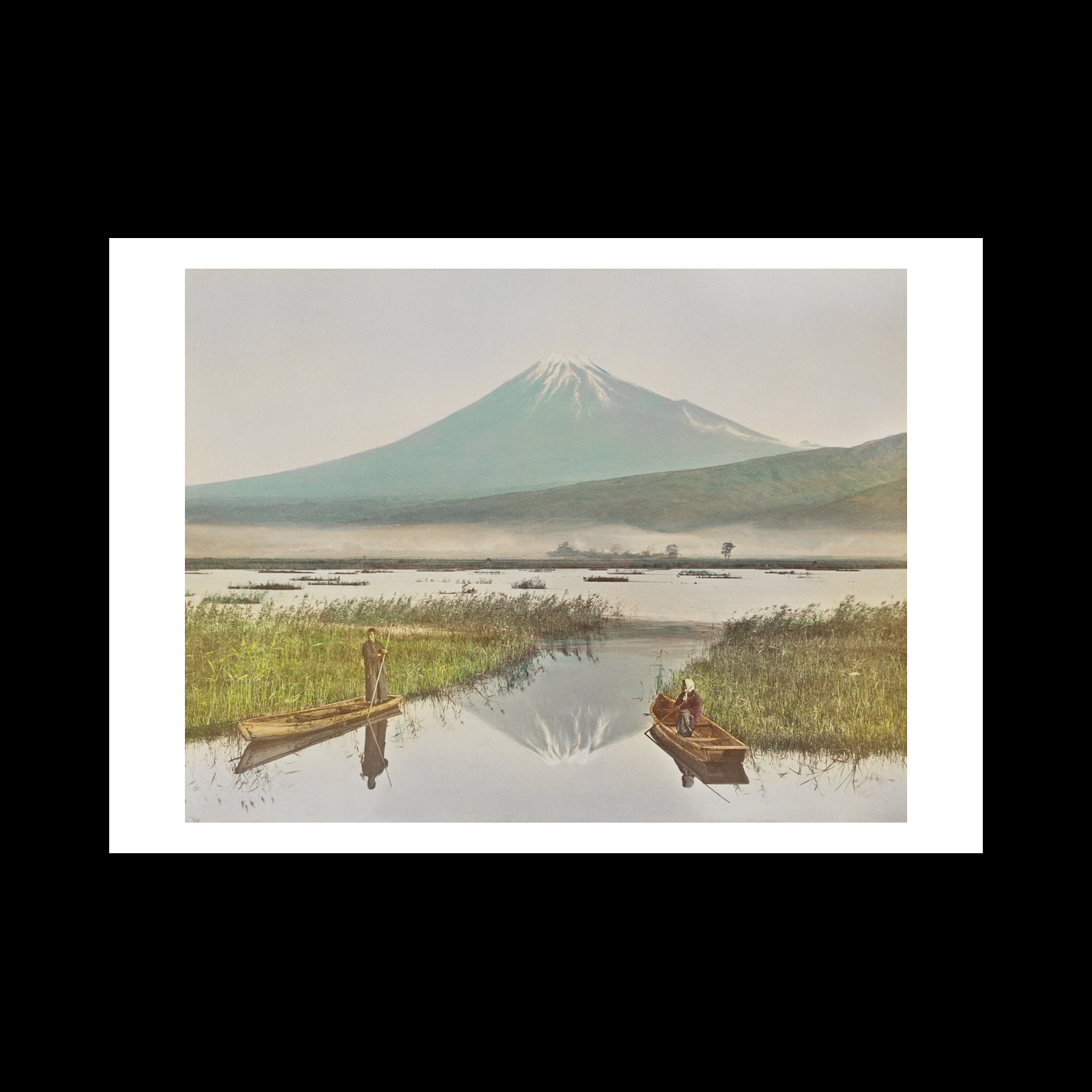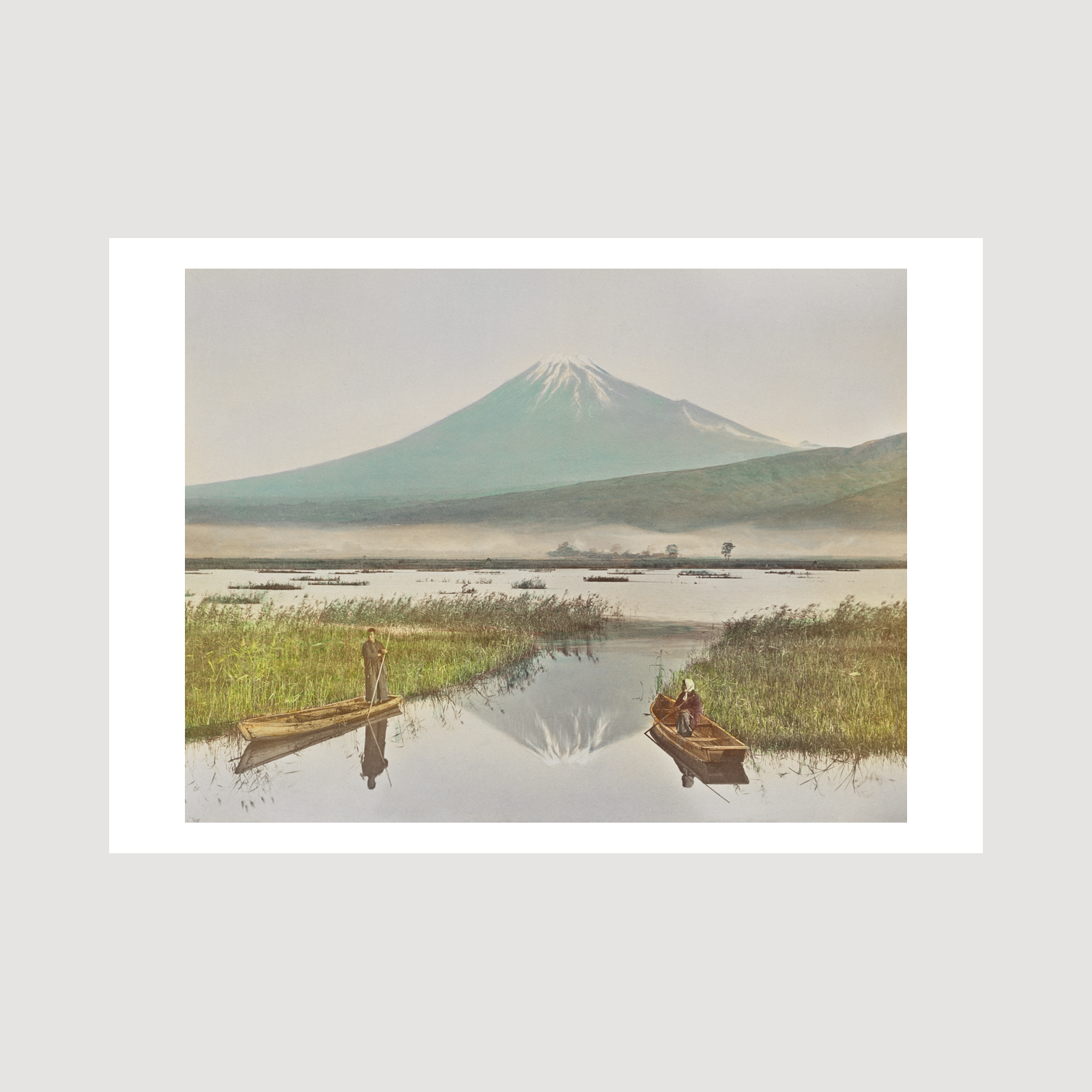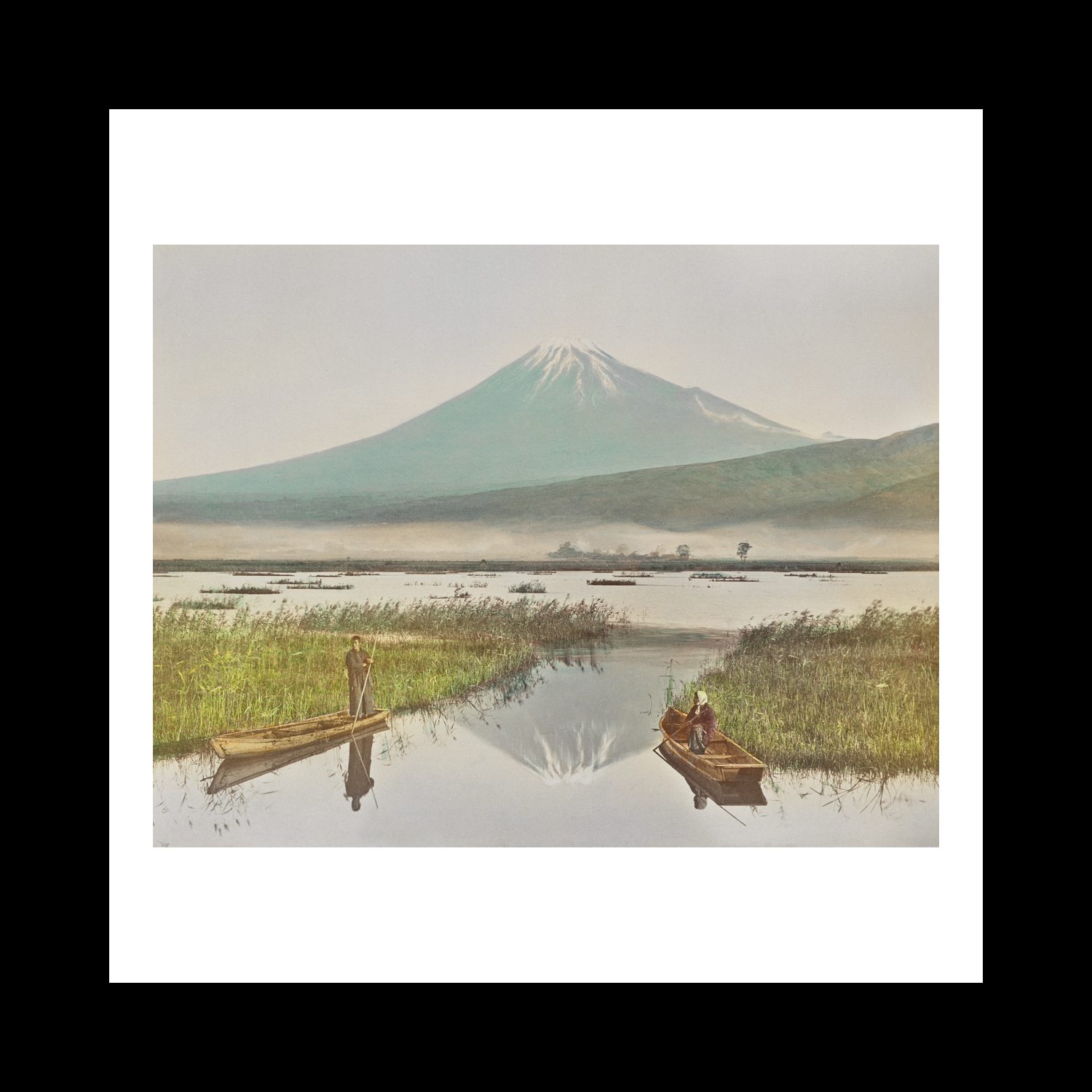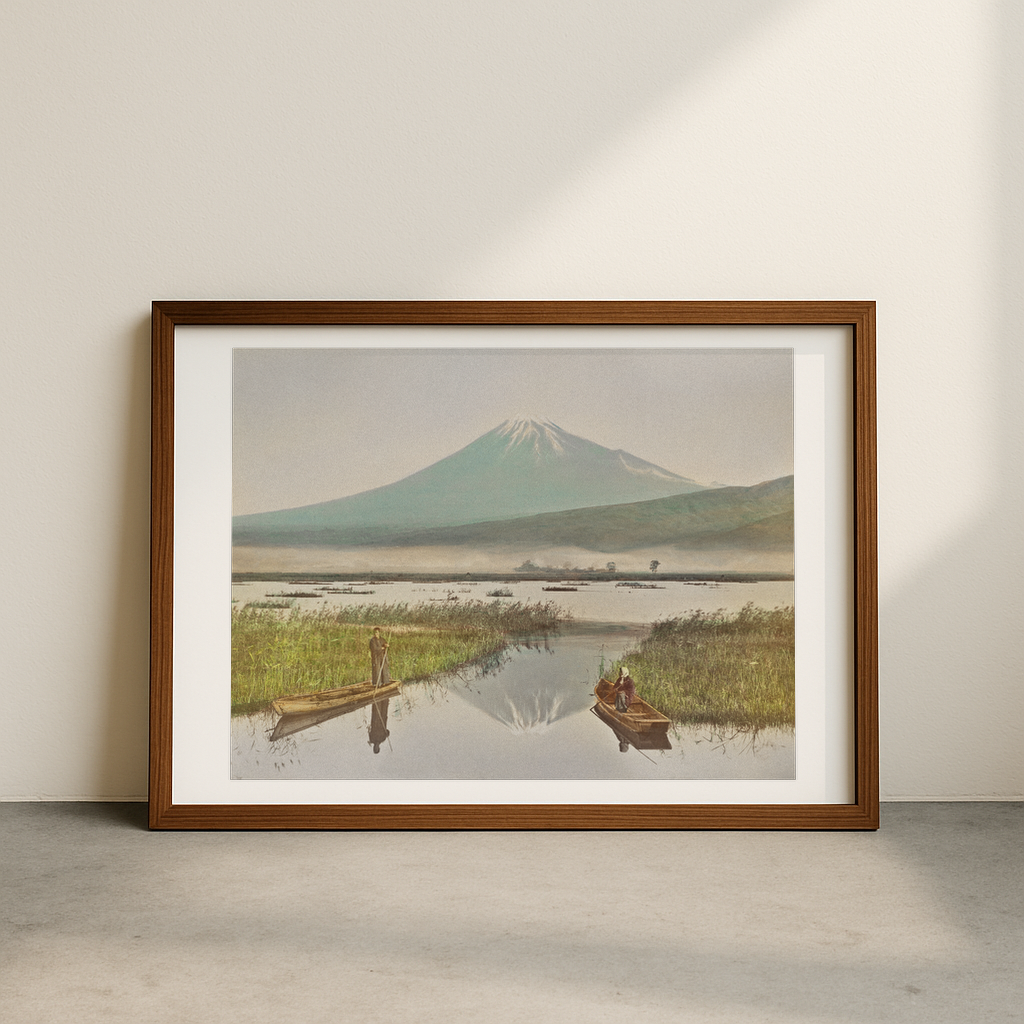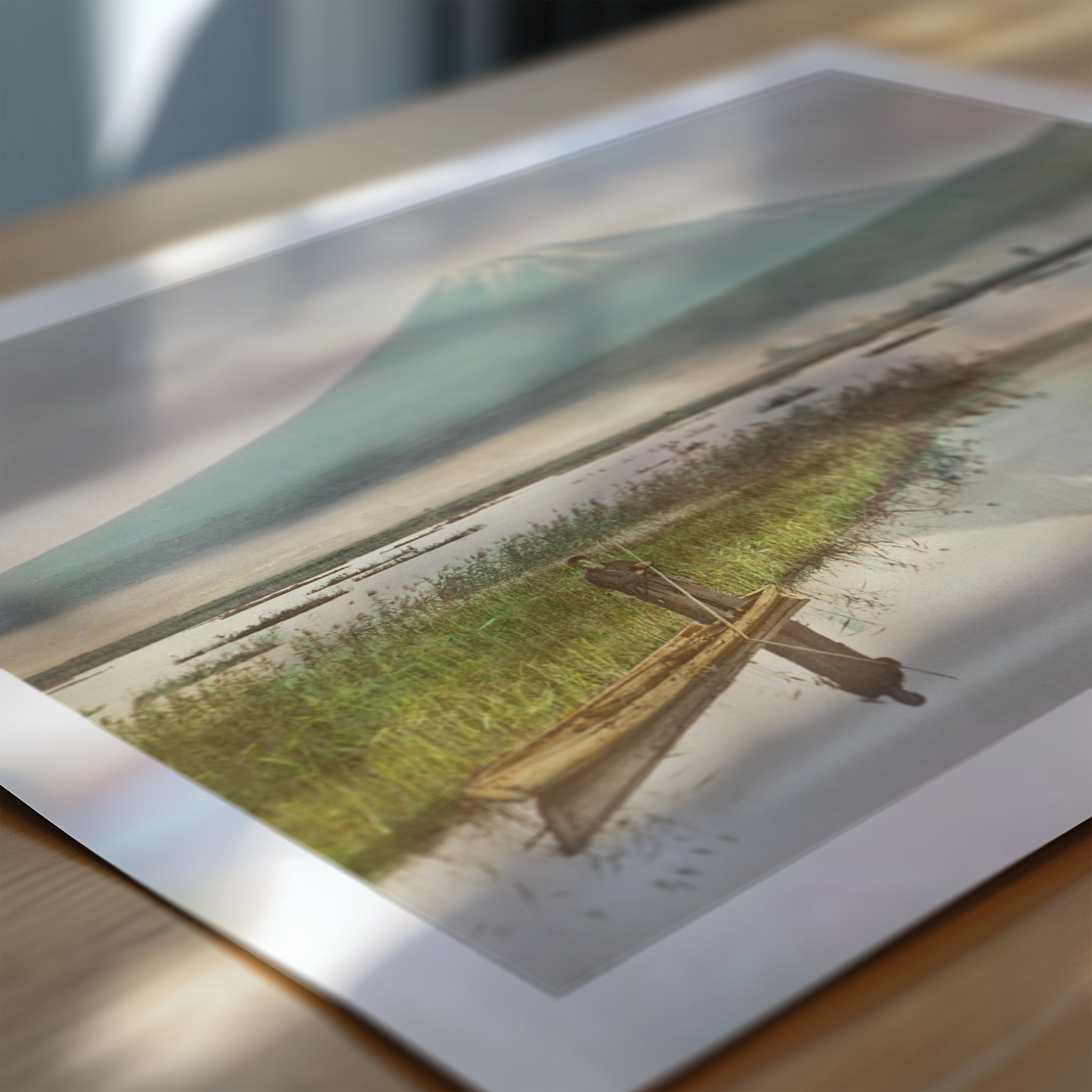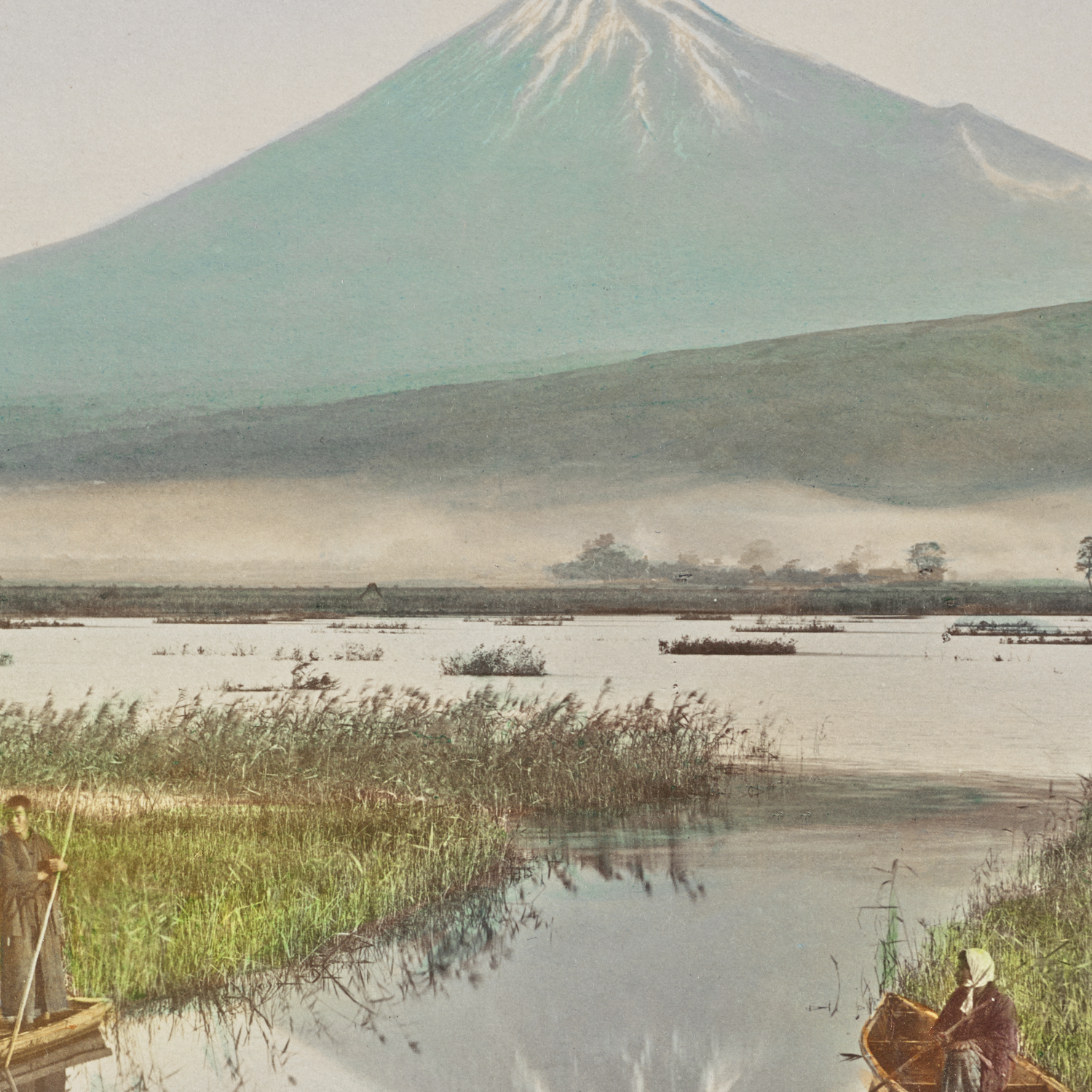1
/
of
6
Mount Fuji as Seen Kashiwabara,
Mount Fuji as Seen Kashiwabara,
Regular price
£12.45 GBP
Regular price
Sale price
£12.45 GBP
Taxes included.
Quantity
Couldn't load pickup availability
Kazumasa Ogawa's 'Mount Fuji as Seen from Kashiwabara' (1897) captures Japan's most revered mountain through the innovative medium of hand-coloured albumen silver printing. The photograph presents Mount Fuji in magnificent isolation, its distinctive snow-capped peak rising majestically above the Kashiwabara landscape. The delicate hand-colouring technique adds subtle warmth to the sky and terrain, while preserving the crisp detail of the original black-and-white photograph.
Ogawa, a pioneering figure in Japanese photography, was among the first to master Western photographic techniques while maintaining traditional Japanese aesthetic sensibilities. His work bridged two worlds during the Meiji period, when Japan was rapidly modernising and opening to Western influence. This particular image reflects the careful balance between Japanese artistic traditions, with their emphasis on natural beauty and simplicity, and modern photographic technology.
The choice of albumen silver printing, combined with meticulous hand-colouring, demonstrates Ogawa's technical expertise and artistic vision. The process involved coating paper with egg white containing silver salts, then carefully applying watercolours to the printed image. This challenging technique required exceptional skill to achieve the subtle gradations of colour while maintaining the photograph's original clarity. The result is a work that honours both the timeless majesty of Mount Fuji and the artistic innovations of late 19th-century Japan.
Through this image, Ogawa contributed to the visual documentation of Japan during a period of profound cultural transformation, creating a bridge between traditional landscape art and modern photography. His work influenced generations of photographers and helped establish photography as a respected artistic medium in Japan.
View full details
Ogawa, a pioneering figure in Japanese photography, was among the first to master Western photographic techniques while maintaining traditional Japanese aesthetic sensibilities. His work bridged two worlds during the Meiji period, when Japan was rapidly modernising and opening to Western influence. This particular image reflects the careful balance between Japanese artistic traditions, with their emphasis on natural beauty and simplicity, and modern photographic technology.
The choice of albumen silver printing, combined with meticulous hand-colouring, demonstrates Ogawa's technical expertise and artistic vision. The process involved coating paper with egg white containing silver salts, then carefully applying watercolours to the printed image. This challenging technique required exceptional skill to achieve the subtle gradations of colour while maintaining the photograph's original clarity. The result is a work that honours both the timeless majesty of Mount Fuji and the artistic innovations of late 19th-century Japan.
Through this image, Ogawa contributed to the visual documentation of Japan during a period of profound cultural transformation, creating a bridge between traditional landscape art and modern photography. His work influenced generations of photographers and helped establish photography as a respected artistic medium in Japan.
